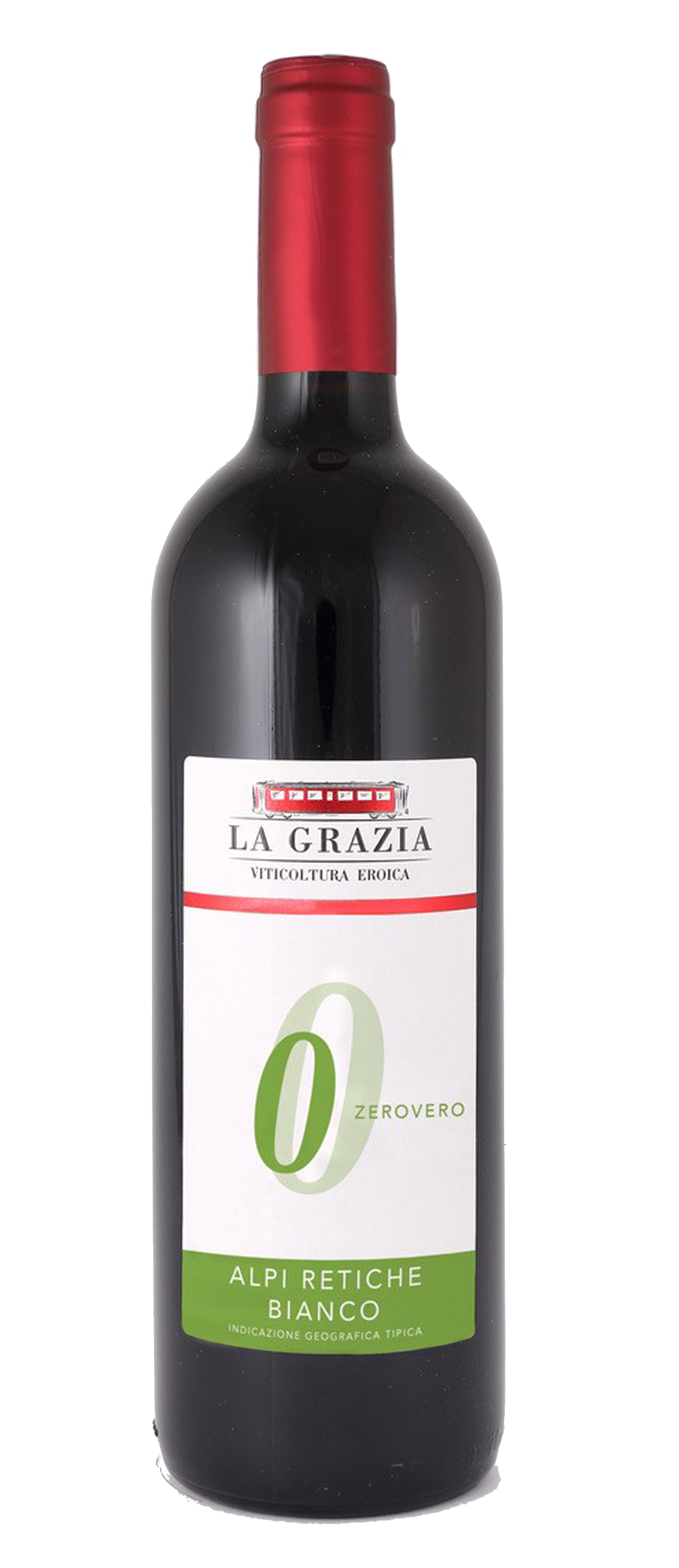
White Rhaetitian Alps
Typical Geographic Indication
The origin (the vine, the grape)
The most characterising element of this wine is undoubtedly the special grapes used in its production, as well as the orographic location of vineyards where they are harvested.
The wine is the result of the vinification of several white grape varieties: Solaris, Bronner, Johanniter, Souvigner and Muscaris. All “piwi”, meaning they are naturally resistant to certain kinds of funghi (downy mildew, oidium, botrytis…) which require treatment using phytochemicals.
In order for single grape varieties to best express their special qualities, they are located at different altitudes, from 450 to 950 metres above sea level, on lands which are also on the right side of the Adda river, with west/ north west exposure, in draining soil and altogether beyond the DOC (controlled origin denomination) and DOCG (controlled and warranted designation of origin) areas.
ZEROVERO is the culmination of a production philosophy: “no vine and grape treatment, no phytochemicals or plant protection products, no copper, no sulphur”therefore no build-up of pollutants in the soil, which is covered in grass that is cut, green-manured and mulched.
An “organic wine” in the truest sense of the term.
The cellar, the wine
The naturalness pursued in the vineyard is followed up by meticulous attention to cellar processes.
Grapes are delicately crushed shortly after harvesting, separated from the stalk and immediately sent to a lenticular membrane press to obtain a free-run and slightly pressed must only. This is followed by static cold decantation without the use of sulphites and successive conveyance for fermentation off the skins, at controlled temperature.
Once preparation for fermentation is completed, must is divided into two fractions: the first, to which a very small amount of sulphites is added and the second, currently limited in quantity, which proceeds to develop entirely free from sulphites right through to all successive refinement phases.
This is followed be regular decantation for clarification until the summer after the harvest, which is when the wine is bottled.
The wine which contains very low levels of sulphites presents golden yellow and resplendent tonalities. To the nose it offers distinct terpenic notes, with a hint of muscat and citrus sensations, subtle pineapple notions and a distinctive minerality. On the palate it is sapid, fresh, pleasantly fruity, with a strong structure and decisively mineral.
The sulphite-free wine (currently available in limited quantities only) is similar in every way. It features an even more enhanced golden yellow tonality. To the nose it offers the same sensations which unravel with a slight delay as when bottled it is thoroughly inerted using nitrogen gas. It is even more surprising in terms of flavour, as it releases a slight tannicity, which also ensures its capacity to resist over time.
